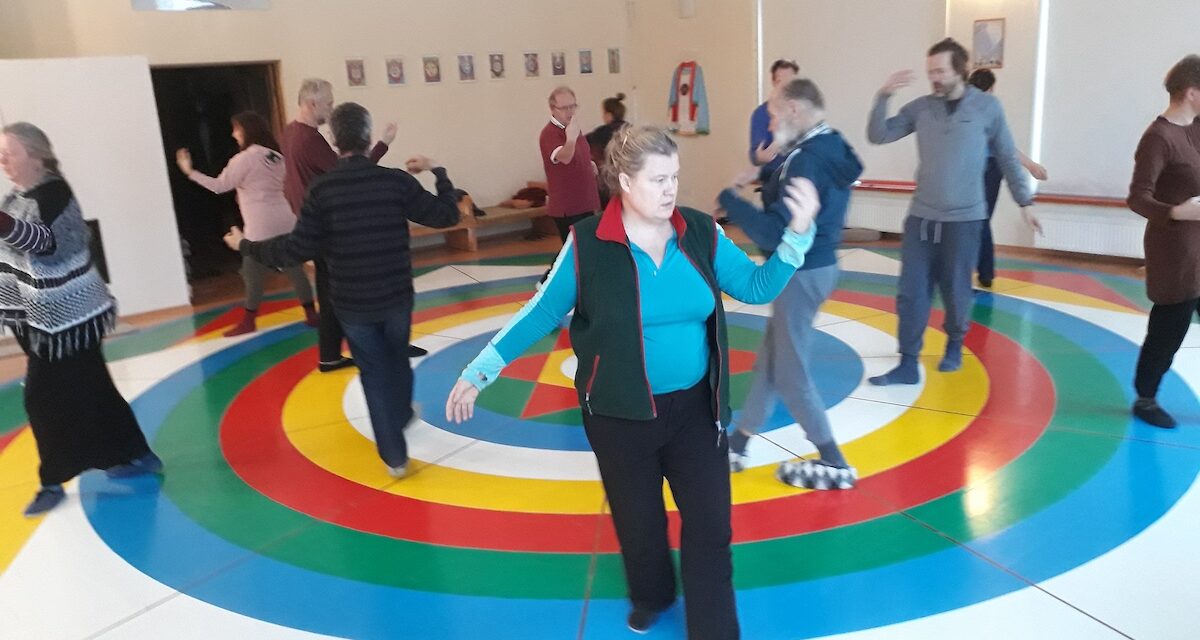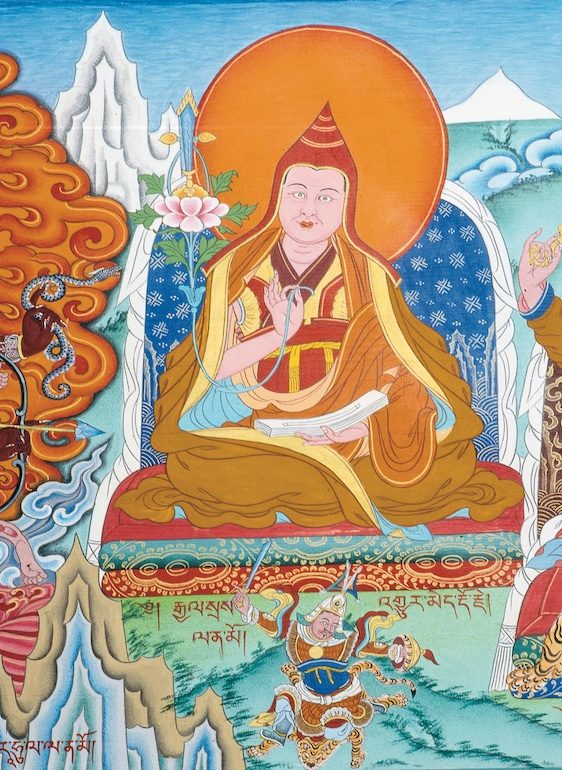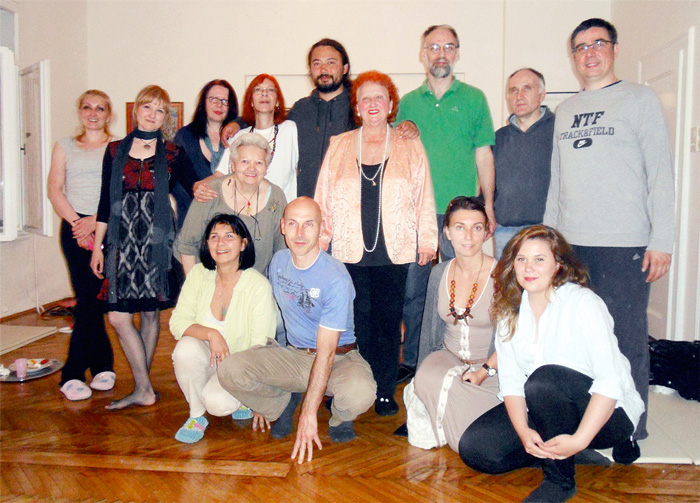Last year marked a special anniversary for our practitioners from the Baltic countries—thirty years on the Vajra Dance Mandala. That’s how long it’s been since Gala from Latvia, Aušra from Lithuania, and Tarmo from Estonia first discovered the Vajra Dance. To this day, they continue to dance regularly on the mandala. We talked to one of the practitioners, Gala, to hear her inspiring story.
Mirror: Gala, you first encountered the Vajra Dance more than thirty years ago. What was that like?
Gala: In May 1992, Namkhai Norbu Rinpoche held a retreat in Jūrmala, a seaside town on the Gulf of Riga in Latvia. That’s when I first saw the Dance of the Song of Vajra performed by the Master himself. Since it was our very first meeting with the Teaching, we didn’t yet have a mandala. But the retreat venue had an open-air circular dance floor with a tree growing right in the middle. The people attending the retreat drew a mandala there with colored chalk.
Watching the Master dance, I felt a strong desire to learn it myself. But I had to wait more than two years. It wasn’t until December 1994 in Vilnius (Lithuania) that Adriana Dal Borgo held a course to teach the Vajra Dance. In the mid-90s, Eastern Europe was struggling with serious economic difficulties. I myself had problems with money, with work, even with family. Somehow, by a stroke of luck, those problems eased, and together with two Vajra sisters from the Latvian Dzogchen Community — Irina Pustovit and Valentina Smirnova — I was able to attend that retreat.
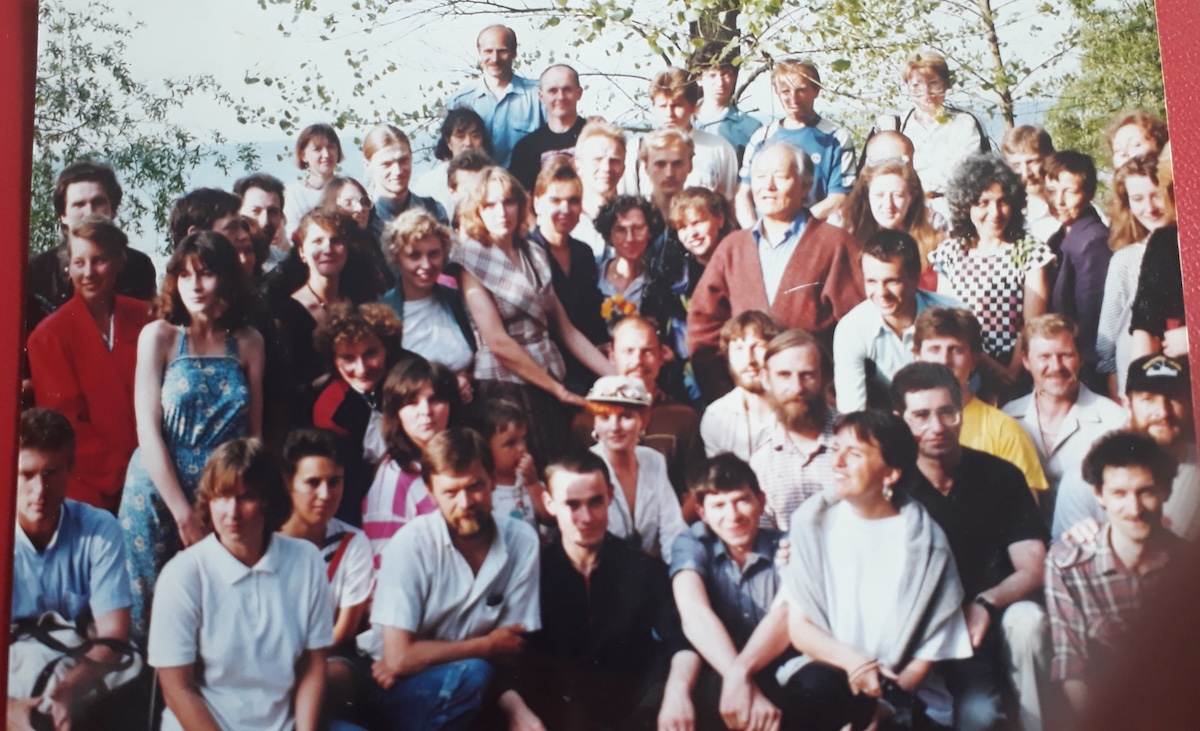
Mirror: What was that very first Vajra Dance retreat like for you?
Gala: We stayed in a beautiful apartment in Vilnius belonging to two practitioners, Džugas and Aurelija. It was on the top floor, and we ended up staying in their guest room together with Tarmo Lass from Estonia and Emīls Melderis who was passing through from France on his way to Latvia.
The sessions took place in a nursing home, on a mandala prepared by Aušra and Ernestas Lapinskas. The mandala had been painted on fabric, and by the time the retreat started, the paint hadn’t fully dried yet, so it had to be covered with plastic sheeting. Our classes were held in the gymnasium, with sports mats lined up along the walls. After long hours of practice, we’d collapse on those mats between pamo and pawo sessions, completely exhausted, because we had to learn so many difficult movements in a short amount of time. It was at this retreat that I first met Valdas Kirsa and Algis Lukševičius who later became the very first Vajra Dance instructor in the Baltic countries.
To be honest, when I mentioned the 30th anniversary of that Vilnius retreat last year, during a practice retreat in Ievlejas (a retreat center in Latvia where the Baltic Dzogchen Communities gather), I realized that I was the only one for whom that retreat was of such a great importance. I was older than the other participants, most of them were still young at that time, with love, family, and children all ahead of them. But it was the start of a new chapter for us. And what a chapter it turned out to be!
Mirror: I imagine others also had to make quite an effort to get to that retreat?
Gala: Absolutely! Before Vilnius, Adriana had led a course in Tallinn (Estonia). It drew a large group, including people who hadn’t yet received transmission from Namkhai Norbu Rinpoche. One of them was Tarmo Lass.
When the retreat ended and Adriana boarded a train to Vilnius, Tarmo decided to follow her—hitchhiking, since he had no money. His first stop was the city of Tartu. He somehow managed to get a ride, but along the way the car was pulled over by police for a document check. Tarmo was astonished to see the officers wearing bulletproof vests and carrying Kalashnikovs. Later, it became known that not long before, during one of these document checks, a firefight had broken out and two policemen were killed. The case was never solved.
It was December, bitterly cold, and often drivers refused to pick Tarmo up; sometimes there were no cars at all. At one point he got so frozen that he went deeper into the forest, spread out his mat, and wrapped himself in plastic sheeting to keep warm. It worked. Along the way, strangers shared food with him. When he finally reached Vilnius, he stayed with Aurelija and Džugas. Every day he would take a shower in a freezing bathroom and then crouch down to carefully darn his wool socks. That’s how I remember him. He hitchhiked back home the same way, sometimes walking on foot. Tarmo told me that when he crossed the border, exhausted and sleep-deprived, he drifted in and out of consciousness, half-dreaming as if he were walking across a carpet of flowers. That’s how our friendship began.

Mirror: After that retreat, how did you manage to keep your knowledge alive? How did you practice?
Gala: After returning from Vilnius, I repeated the movements whenever I could, at bus stops, at home, anywhere there was space. At that time, we didn’t have a mandala in Riga, but our community gathered for collective practices in a huge abandoned building that once was a computer center housing a giant mainframe. On its empty floor, together with my Vajra sisters Valya and Ira who had also participated in the Vilnius retreat, I drew half of a mandala. That’s where I kept practicing the dance. When I went to St Petersburg in 1996 for a retreat with Adriana, it turned out I’d been making just one mistake. That retreat was also when I first met Pille and Mart Viirés from the Estonian community.
By then, the whole Latvian community of Padmaling wanted to dance. They not only invited Adriana but also bought a semi-finished mandala made of Tyvek in the US. The outline was already printed, we only had to paint the sectors. I wasn’t part of that effort. If that mandala still exists, it should now be in Merigar East, where we brought it for the first retreat held there.
Padmaling wanted Adriana to teach the Dance of the Song of Vajra, but experience had shown this dance was too difficult to learn in one go. So they decided to start with the Dance of Three Vajras and the Dance that Benefits Beings. But we were persistent. Instead of a single retreat, we organized several. In the end, we learned the Dance of the Song of Vajra, too. Adriana gave a real boost to our practice—by the late 1990s, almost the entire Padmaling community would stand together on the mandala. We even joined forces with the Lithuanian community, visiting each other and practicing together.
Unfortunately, that joy didn’t last forever. Times changed. At one point, I found myself dancing alone on the mandala in Riga. It was Algis who supported my practice then; on weekends he would bring practitioners from Lithuania. Later, Liga Zariņa joined our community. With great determination, she learned all the dances by repeating the movements after me. Then a group in Daugavpils, three hours from Riga, began to dance, and I would travel there to join them.
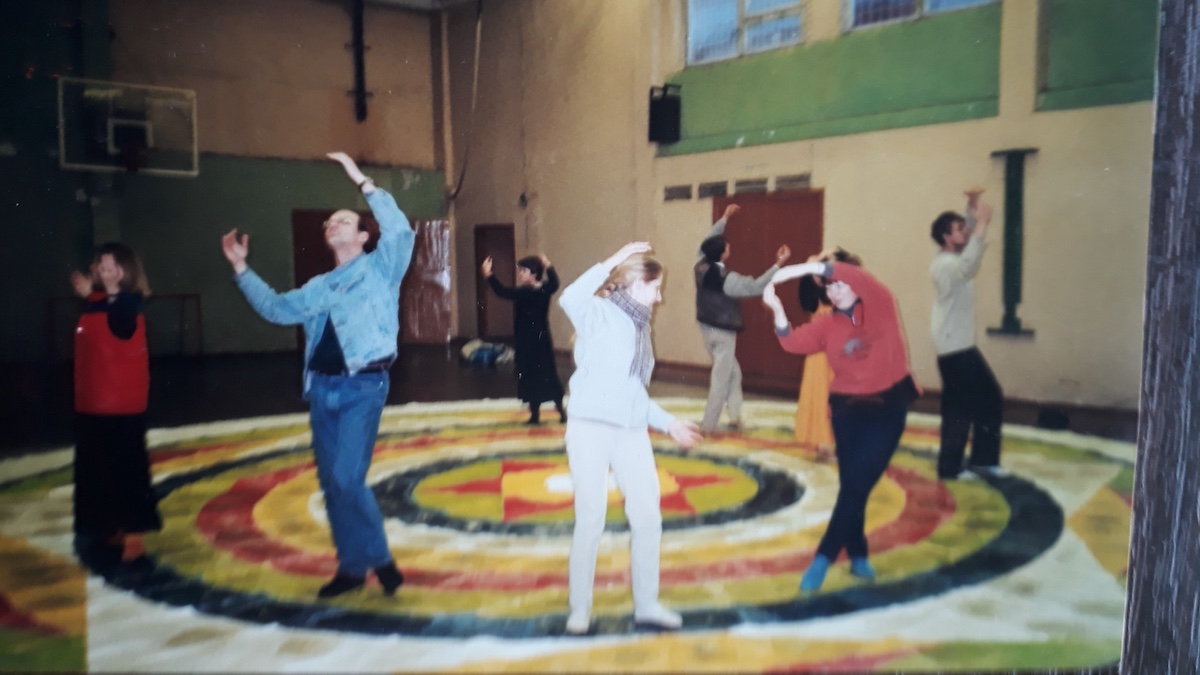
Mirror: Where else have you had the chance to dance? Any unusual mandalas? Tell us about the ones you created yourself.
Gala: In 2004, I had the chance to live in a countryside home owned by my friends. They had moved to the city, and someone had to look after the place. Out there, I built a rope mandala directly on the ground. Dancing on it wasn’t easy at all. On bare earth, every turn takes more effort. I tried laying plastic sheeting under the ropes, but by then summer had already ended, and in the mornings the mandala would freeze over and turn into an ice rink.
There I realized I wanted to dance in the city, together with the community. I’m not really a countryside person! When I returned home, I started working on a new mandala. At the school where we used to dance, we managed to rent a hall for a weekend so we could have a mandala there. We had just two days and three nights to complete it. I bought Tyvek and all the necessary materials, and asked my Vajra brother Yura Egorov from the Riga Community to help me. I was so focused on finishing everything on time that I completely forgot about the basics. For two days straight we cut and glued the material, drew the mandala’s layout, and painted it with total dedication, forgetting completely about food. Luckily, Yura’s wife Vera came to the rescue and kept us fed during those two days. Without her, we would have collapsed. Another Vajra brother, Alexey Nikitin, also joined us to help with the painting.
Interestingly, in Tallinn they’ve always danced in the same school, and in Vilnius it’s much the same. But in Riga, our destiny is that of nomads. We danced in different schools and even an art gallery inside a shopping center. One summer, I spotted a small paved open-air square next to a big furniture store. It was perfect for dancing. Well, almost. The shop staff thought we were performing some sort of magic ritual and tried to chase us off. Now and then a drunk would wander out of the bushes, but they didn’t bother us much. In the end, things with the store staff smoothed over, thanks to the calm attitude of the male owner. Dancing outdoors is wonderful in warm, dry weather — but around here, that’s never guaranteed.
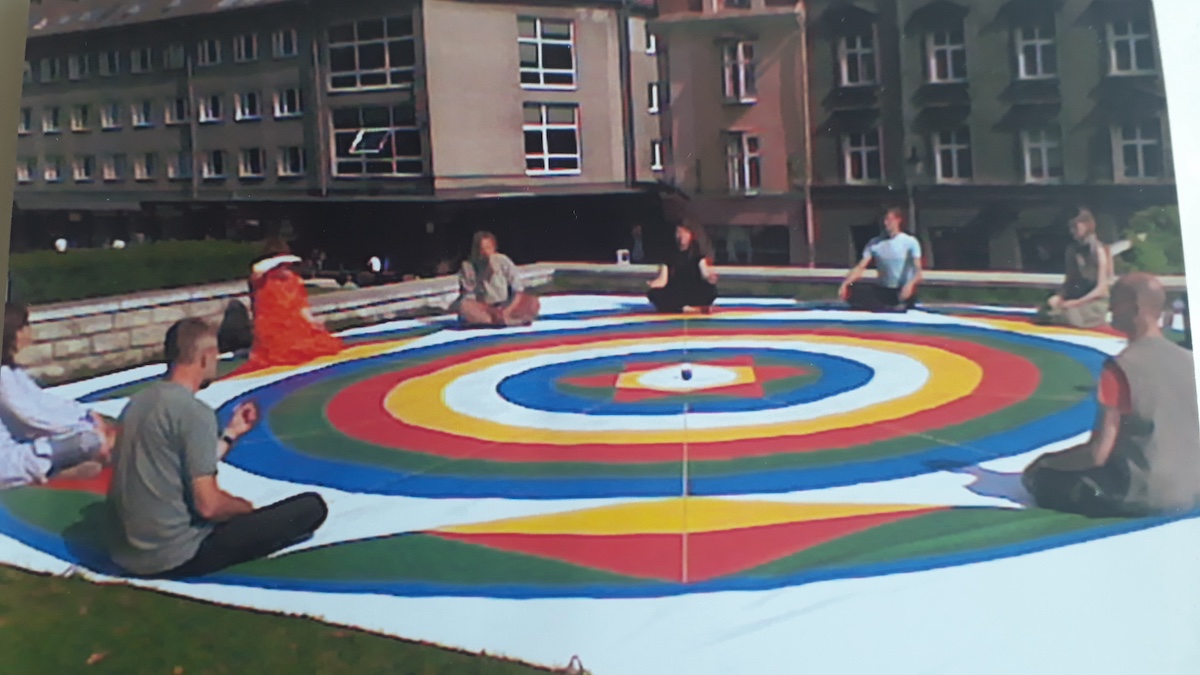
Later, we were lucky to establish cooperation with a Wushu school, which turned out to be the best venue we’d had in years. But as life usually goes, everything changes. After some time, the school had to relocate, and we moved along with it. Our neighbours also had changes: Vilnius now got a second instructor, Jurga Miškinytė, while Algis first went to work in England and then to Tenerife.
At one of the Vajra Dance retreats in Jūrmala, a practitioner from Tallinn named Alar Kukk showed up. He made rapid progress and, before long, became a Vajra Dance instructor himself. Soon we were dancing not only in Riga and Vilnius, but in Tallinn as well.
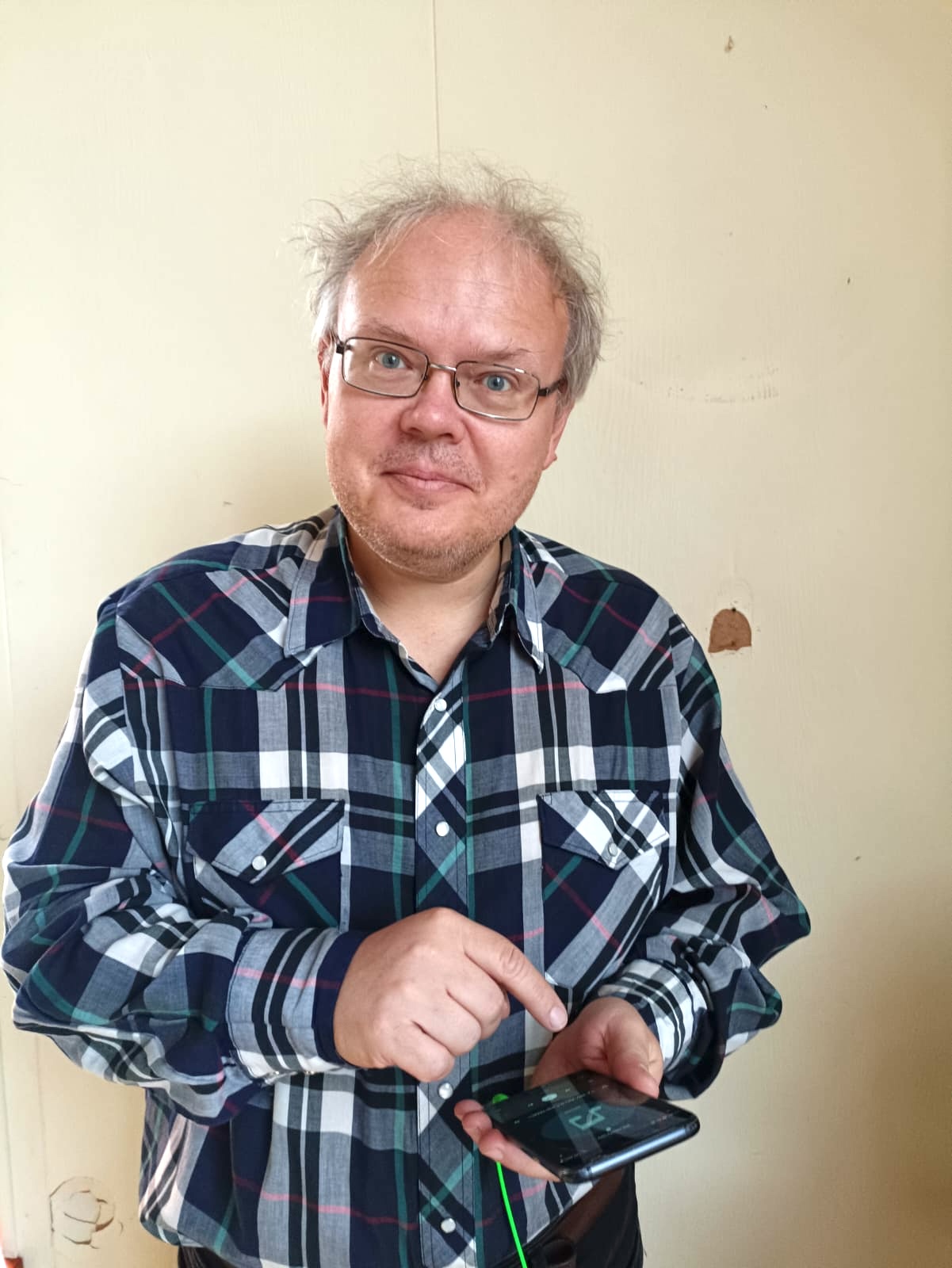
Mirror: You once mentioned that, for the sake of the Vajra Dance, you had to break the law. Tell us more about it.
Gala: Yes, that was back in 2002. We were going to attend Namkhai Norbu Rinpoche’s first retreat in Crimea and had handed in our passports to get transit visas through Belarus. Around the same time, Algis Lukševičius from Lithuania invited us to come dance in the city of Šiauliai, not far from the Latvian border. Back then, border checks were still in place between the countries, and my passport was at the Belarusian consulate. How could I cross? I had an idea: I’d borrow my daughter’s passport. Not because I thought the guards wouldn’t notice the age difference, but Šiauliai was so close, and I figured I could just slip there and back quickly.
Well, as the bus pulled up to the border and the guards began checking documents, it suddenly hit me that these were border officers trained since Soviet times to spot criminals. You can guess what happened next. I was arrested and put in a cell. Not exactly a pleasant experience. Guruyoga came to my rescue while they tried to figure out who I was and whether I posed any threat.
I don’t remember how long my “imprisonment” lasted, but eventually they released me and decided to escort me to the nearest Latvian town, Jelgava. That worked out nicely, since my daughter and her family happened to live there at the time. I think the entire border staff came out to watch and laugh at the “crazy woman.”
It would all have been much simpler if I’d just sorted things out on the spot, instead of setting off to Crimea for the retreat. Because of that, the case went to court, and I was fined 300 lats, about a good month’s salary back then. I even tried to appeal the ruling, which only gave the appellate court another laugh at my expense. Later I learned that if I had actually managed to cross and then been caught on my return, the punishment could have been far worse.
Mirror: These days there are no borders between the Baltic states. Practitioners from all three countries gather at the Ievlejas retreat center. How did that place come about?
Gala: Originally, the center was designed and built by a Hindu community, and at first we would bring our mandala there. Later, we painted a mandala directly on the floor in the practice hall. Eventually, Ziedonis Rengitis, a co-owner of the retreat center, together with Alar Kukk, bought it from the previous owners, and now it belongs to the Dzogchen community.
When it came to drawing the mandala, we couldn’t have managed without Ruslan Kim’s help. He really made it possible. He was assisted by Olya Plyaskina who had just moved from Daugavpils to Riga at that time. Today, Olya is a dance instructor herself. Other practitioners, like Emīls Melderis and Katerina Martynova, also joined in painting the mandala. Now, we regularly gather and dance together—practitioners from Estonia, Latvia, and Lithuania.
We are incredibly fortunate in this life to have the Teacher, the Teaching, and the Community. There’s no way to fully express our gratitude to the Master for the priceless knowledge he gave us. Truly, we are the happiest people in the world.
Featured image: Regular Vajra Dance practice on the mandala in Ievlejas.

